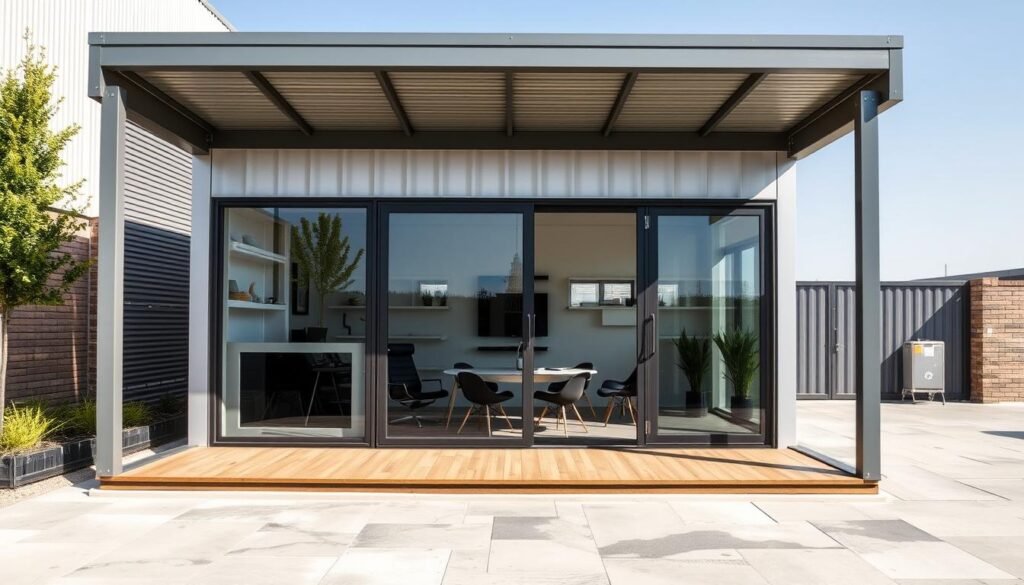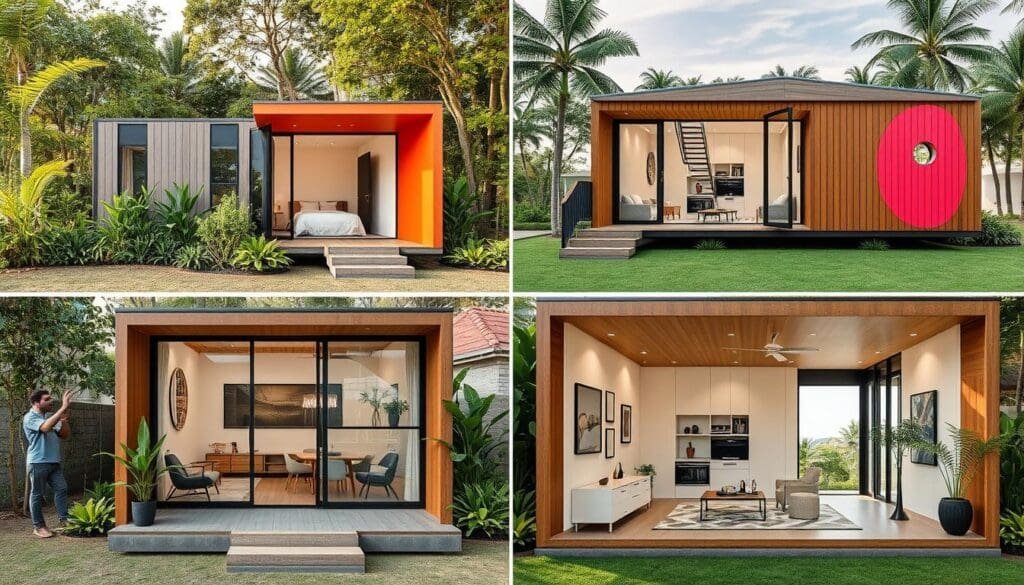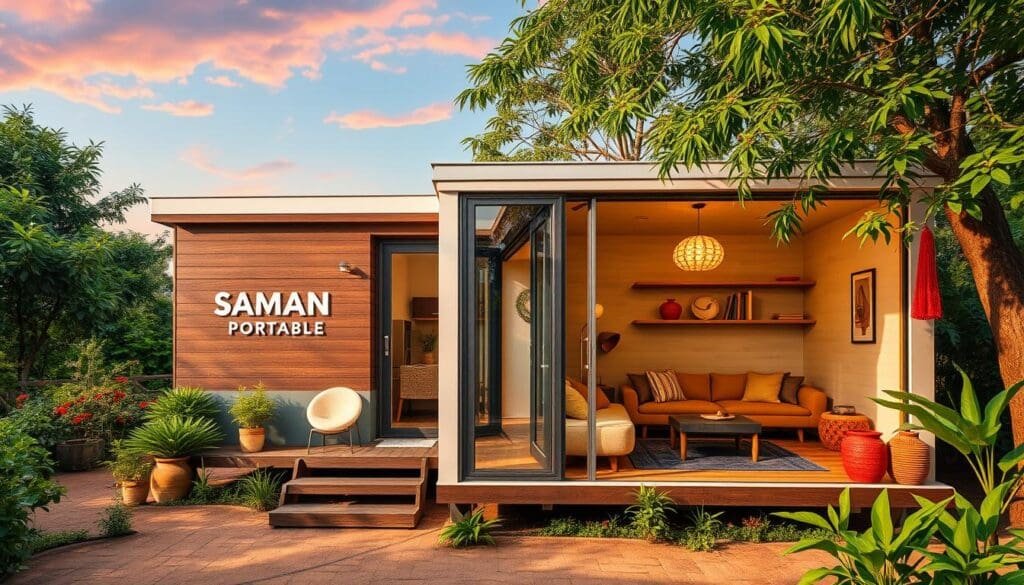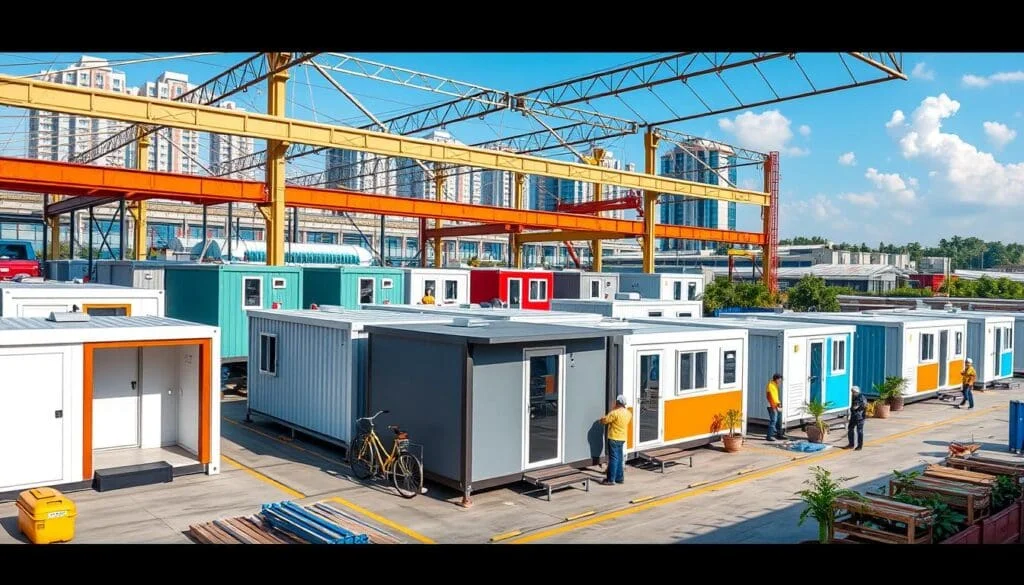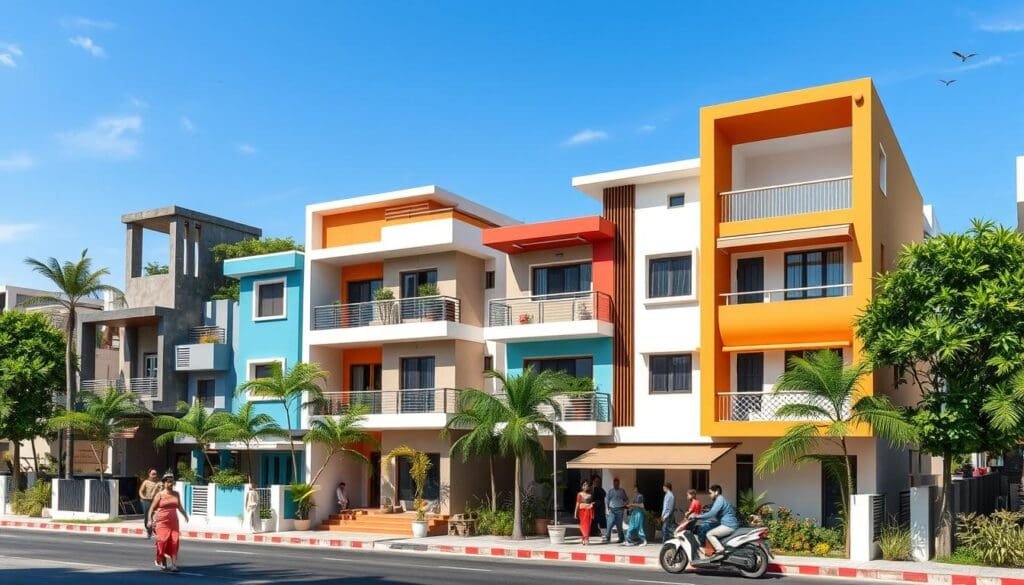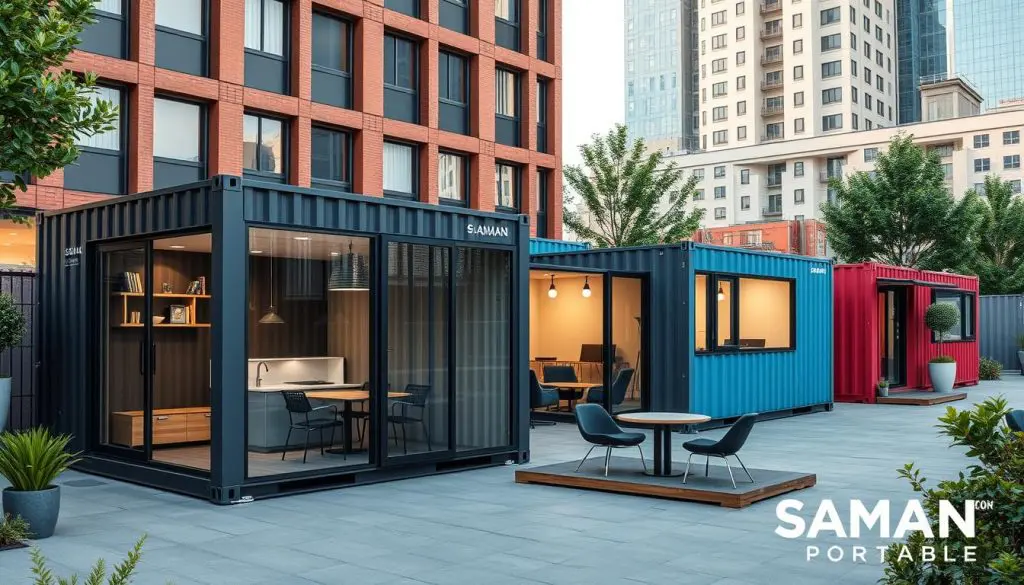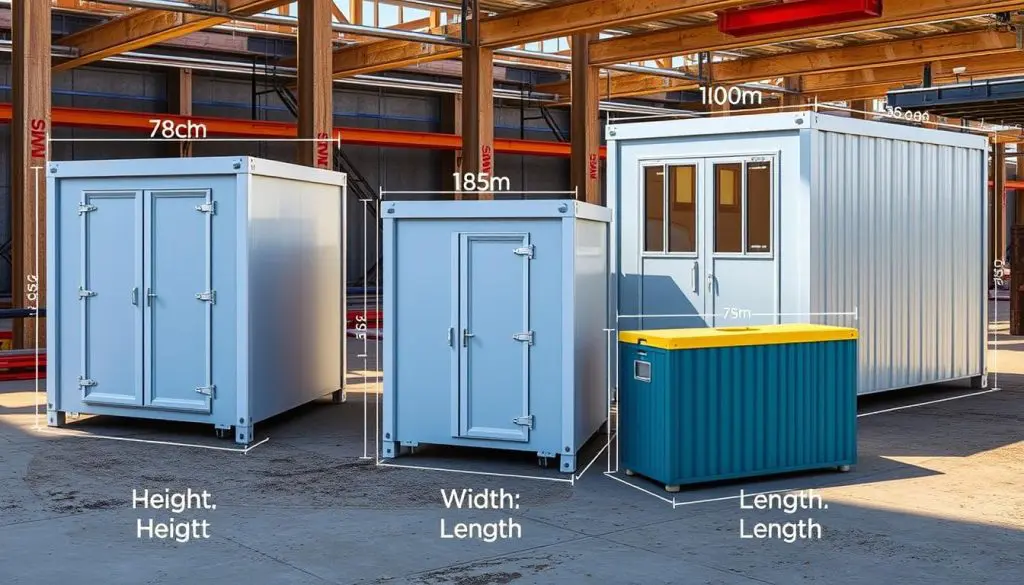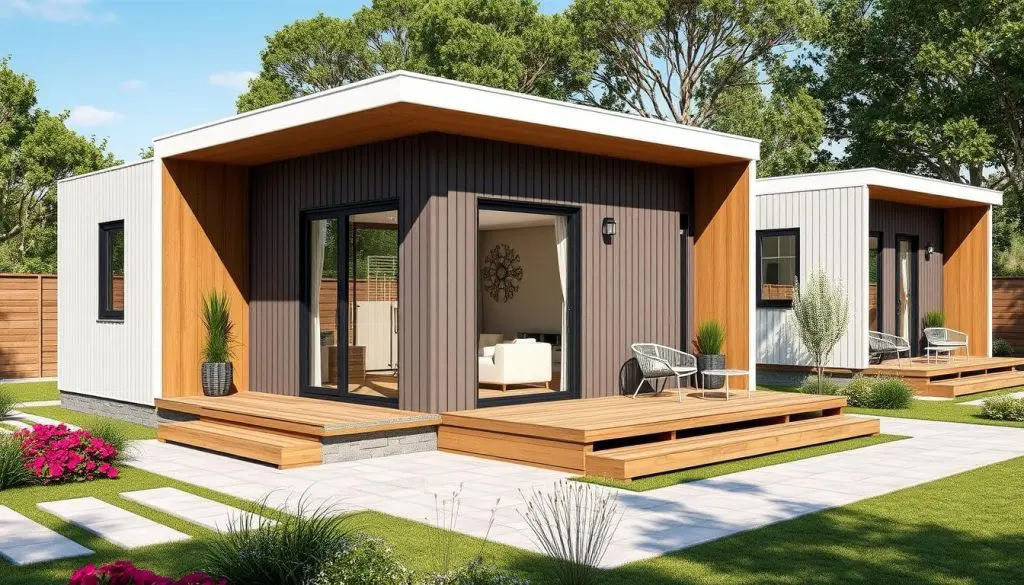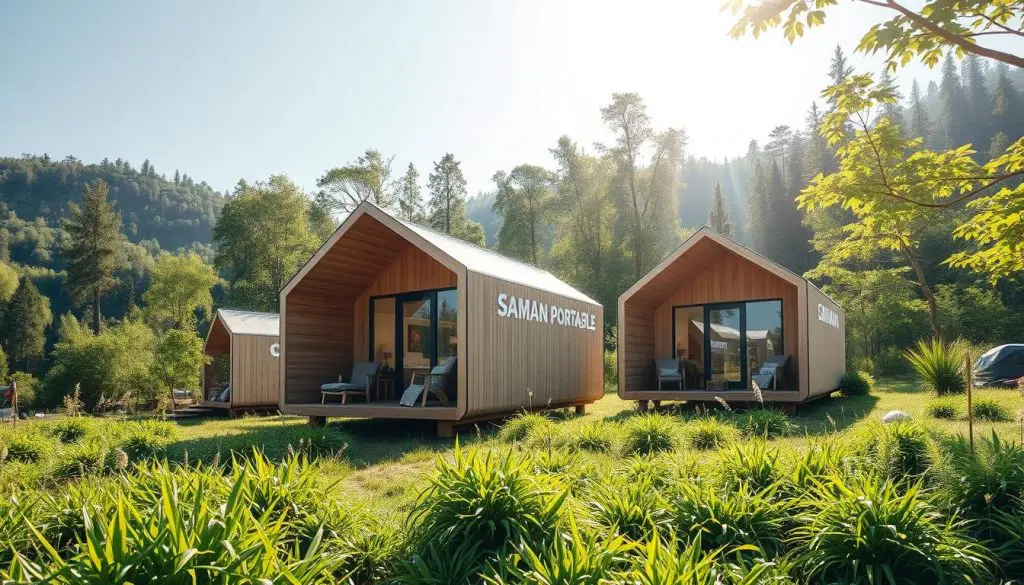Exploring Life on Cargo Ships: Crew Quarters, Living Conditions, and Modern Innovations
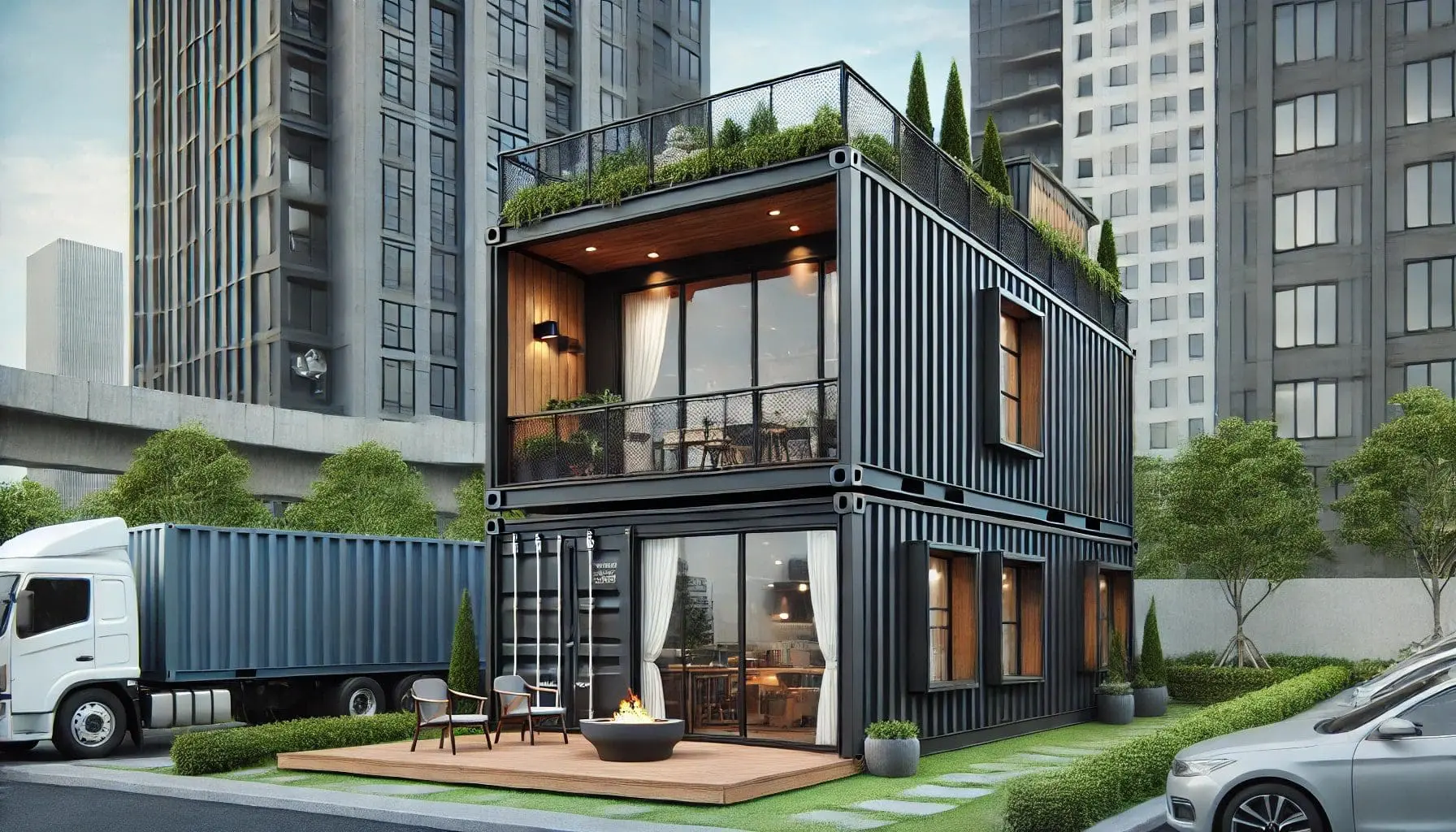
Introduction to Cargo and Container Ship Living Quarters
Understanding Life in Cargo Ship Living Quarters
Living on a cargo or container ship offers a unique lifestyle shaped by the demands of maritime work. For crew members, cargo ship living quarters and container ship crew quarters serve as essential spaces for rest, comfort, and safety during long voyages. Life on these ships requires resilience and adaptability, as the crew often spends weeks or even months at sea. With this in mind, the design and functionality of the living quarters on board are crucial for supporting both physical well-being and mental resilience.
The layout of these living quarters varies by ship size, crew hierarchy, and the type of voyage. Officers and higher-ranking crew members generally have private or semi-private rooms, while general crew members share accommodations. For example, a typical cargo ship crew cabin includes essential items such as beds, storage lockers, and desks. Some of the newer ships are equipped with advanced amenities and improved layouts to help reduce the discomfort of long stays at sea.
Purpose and Importance of Crew Living Quarters
Cargo and container ships are designed primarily for functionality, focusing on transporting goods across long distances. However, the design of cargo ship crew quarters prioritizes essential comfort and security, providing crew members with spaces that allow for rest and relaxation amid demanding schedules. Today, these living spaces incorporate elements aimed at enhancing comfort, such as climate control, soundproofing, and secure storage. These considerations are critical for ensuring that crew members are well-rested and able to perform their duties effectively.
Modern container and cargo ships are also equipped with features to support the health and well-being of their crew. Container ship living quarters are often outfitted with features like improved ventilation, natural light, and sound reduction systems. These elements can significantly enhance life onboard, especially on vessels carrying crew members through rough seas. The layout and functionality of these quarters resemble those found in high-quality portable cabins on land, offering practical design that combines space efficiency with comfort. For ideas on well-organized compact spaces, you may explore portable cabin designs that balance practicality and comfort.
Overview of Modern Living Standards for Cargo Ship Crew
The living quarters on modern cargo ships have seen significant improvements over the years, incorporating technologies and amenities that make life at sea more manageable. Some of the latest container offices are equipped with features like Wi-Fi connectivity, air conditioning, and energy-efficient lighting, mirroring many aspects of container ship crew quarters. Modern innovations on board make it easier for crew members to stay connected with family, enjoy entertainment, and rest comfortably despite limited space. For more on efficient container spaces, take a look at advanced container office setups that provide ergonomic layouts for work and relaxation.
In the following sections, we’ll delve deeper into the structure, amenities, and daily life routines within cargo ship living quarters, exploring how crew members manage life on board and what modern advancements are enhancing their experience at sea.
Types of Living Quarters on Cargo and Container Ships
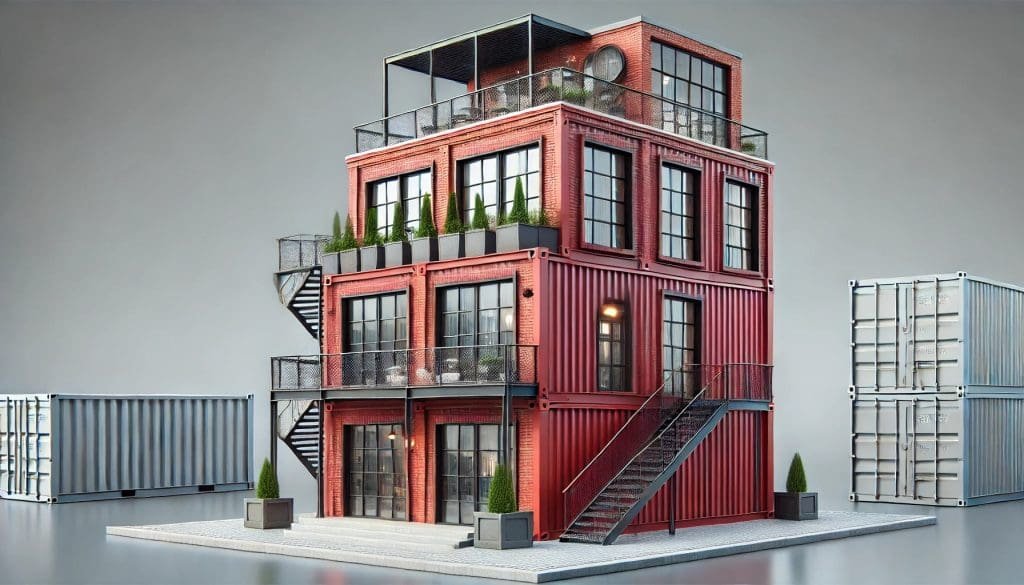
Understanding Cargo Ship Living Quarters Layouts
Cargo ships have a structured and efficient layout for crew accommodations. Cargo ship living quarters typically consist of separate areas for officers, engineers, and general crew members, each designed with the hierarchy and specific duties in mind. Officers often have private or semi-private cabins with more spacious layouts, while general crew members share communal sleeping quarters and amenities. The layout of these quarters supports both efficiency and safety, ensuring easy access to essential areas of the ship, like the engine room and bridge.
Differences in Crew Quarters Based on Rank
The design and quality of the cargo ship crew quarters vary depending on rank. Higher-ranking officers, such as the captain and chief engineer, usually have access to private cabins equipped with an office space, sleeping area, and bathroom. This privacy is crucial for senior staff members who need dedicated space to manage complex duties. On the other hand, entry-level crew members typically have smaller cabins and share certain facilities, which encourages camaraderie and teamwork. This arrangement resembles the layout seen in multi-functional portable cabins, where space is designed to meet a variety of needs efficiently. For ideas on efficient, shared space layouts, explore multi-use portable cabin models that maximize space for functionality.
Communal Spaces for Dining and Relaxation
Besides sleeping quarters, cargo ship living quarters also include shared spaces where the crew can dine, relax, and socialize. These communal areas often feature a dining hall, recreation room, and sometimes a small library or entertainment area where crew members can unwind. Modern ships may provide amenities such as Wi-Fi, satellite TV, and gaming consoles to help alleviate isolation during long voyages. Similar to container offices that incorporate social spaces, cargo ships provide these communal areas to create a more balanced work-life environment. For examples of multi-functional social areas, see social-friendly container office designs that encourage interaction.
Sanitation Facilities in Cargo Ship Crew Quarters
Sanitation facilities are a vital part of container ship crew quarters and are carefully designed to maintain hygiene standards in challenging environments. Most modern ships provide shared bathrooms with showers for general crew members, while officers may have access to private or semi-private bathrooms. Ensuring easy access to clean and functional sanitation facilities is essential for the crew’s well-being and productivity. The setup resembles that of portable cabins on land, where compact, efficient designs cater to daily needs. For ideas on efficient sanitation designs, see well-organized portable cabin layouts that support essential amenities.
Differences in Design Between Cargo and Container Ships
While both cargo and container ships are designed with functionality in mind, the crew quarters on each type can differ based on the ship’s specific purpose and structure. Container ship living quarters tend to have a simpler layout focused on practicality, as these ships are usually smaller than traditional cargo vessels. On container ships, space is often limited, and quarters are structured in a way that maximizes every inch of available area, providing the necessary amenities without sacrificing comfort.
The living quarters on both cargo and container ships cater to the unique demands of maritime life, with careful attention given to hierarchy, functionality, and communal needs. In the next section, we’ll explore the specific structure and layout of a typical cargo ship crew cabin, examining how these spaces are designed to support comfort and productivity.
The Structure and Layout of a Cargo Ship Crew Cabin
Typical Layout of a Cargo Ship Crew Cabin
A cargo ship crew cabin is typically designed for practicality, providing essential space for sleeping, storage, and personal use. Crew cabins are compact yet functional, often featuring a bed, desk, storage locker, and sometimes a small private bathroom. The layout prioritizes efficient use of limited space while ensuring that crew members have the essentials for rest and privacy. The design is similar to efficient setups found in portable cabins, where space is optimized to support a variety of needs. For inspiration on maximizing small spaces, explore space-efficient portable cabin layouts.
Furniture and Storage Solutions in Crew Cabins
In a cargo ship crew cabin, the furniture is often minimal yet multifunctional to serve multiple purposes. Bunk beds are common in shared cabins, while single beds are provided in private rooms for higher-ranking officers. Each cabin typically includes a small desk or workstation where crew members can handle paperwork or other responsibilities. Lockers or cabinets provide essential storage for personal belongings, uniforms, and work gear, allowing crew members to keep their cabins organized despite limited space. The storage solutions resemble those in container offices, where compact, organized layouts support a focused work environment. For examples of compact yet organized storage, check out efficient container office setups.
Ensuring Comfort and Privacy for Crew Members
Privacy is an important factor for crew members, especially on long voyages. While general crew cabins are usually shared, efforts are made to create semi-private spaces with partitions or curtains around bunks, offering a small degree of separation. For officers, private cabins provide more solitude, allowing them to unwind and manage their duties without interruptions. These privacy features are essential for morale and help crew members maintain a sense of personal space. Many portable cabins also include partitions to separate sleeping and working areas, showcasing how compact spaces can accommodate privacy. For ideas on private cabin layouts, see individual-focused portable cabin models.
Technology and Climate Control in Crew Cabins
To ensure comfort, especially on vessels traveling through varying climates, cargo ship crew cabins are often equipped with basic climate control systems. Ventilation is crucial in a confined environment, and many cabins come with air conditioning or heating depending on the ship’s routes. Additionally, some modern crew cabins may include access to Wi-Fi or a simple entertainment system, allowing crew members to stay connected with family or enjoy recreational activities. Container offices frequently incorporate similar climate control and technology to maintain comfort, especially in remote locations. For examples of climate-controlled spaces, explore climate-ready container office designs.
Safety and Emergency Features in Crew Cabins
Safety is a priority on cargo ships, and crew cabins are designed with features to protect occupants in emergencies. Emergency lighting, fire-resistant materials, and escape routes are standard in container ship crew quarters. Each cabin is also equipped with personal life jackets and emergency instructions. The emphasis on safety mirrors that in high-quality portable cabins used in various settings, where emergency exits and safety protocols are integral to the design. For examples of secure, safety-focused setups, see safety-compliant portable cabins that cater to occupant protection.
The structure and layout of a cargo ship crew cabin combine efficiency, comfort, and safety to support the demanding life at sea. In the next section, we’ll explore the essential amenities provided in cargo ship crew quarters, from sanitation facilities to communal dining areas, that enhance daily life on board.
Essential Amenities in Cargo Ship Crew Quarters
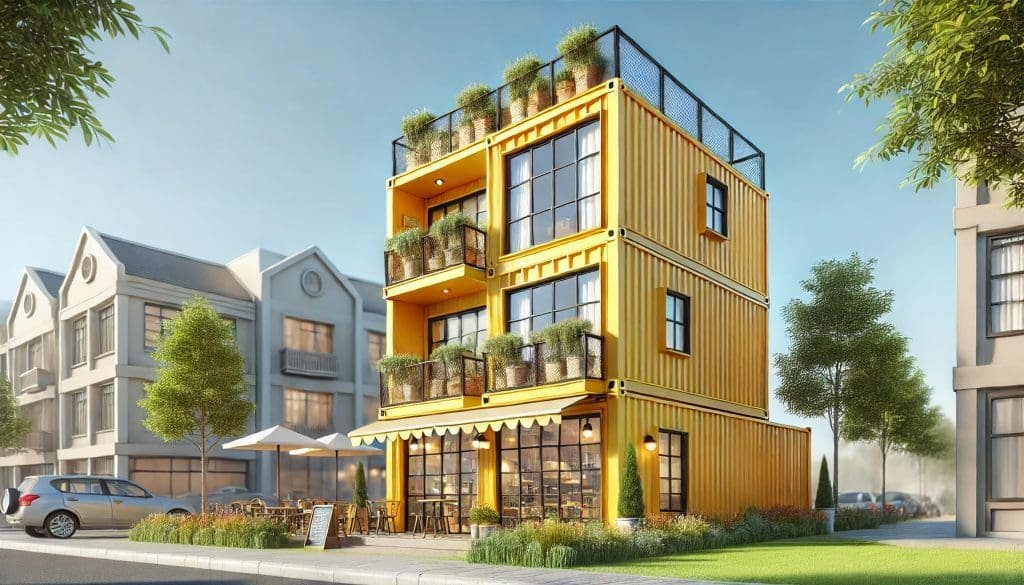
Sanitation Facilities and Personal Hygiene
Sanitation is essential for the health and morale of crew members on board, and cargo ship crew quarters include well-organized sanitation facilities to meet these needs. Shared bathrooms with showers are typically available for the general crew, while higher-ranking officers may have private or semi-private bathrooms in their cabins. These facilities are designed for efficient water usage, often featuring low-flow showerheads and faucets to conserve resources. Just as portable cabins are designed with compact, functional bathrooms, these ship quarters prioritize hygiene within a limited space. For ideas on space-efficient sanitation, explore compact portable cabin designs that support essential amenities.
Dining and Galley Areas for Meals
On cargo ships, crew members share communal dining areas known as galleys, where they gather for meals prepared by the ship’s cook. The galley is typically equipped with industrial-grade appliances to handle bulk cooking and food storage, including large refrigerators and freezers to store supplies for long voyages. Meals are served at set times, providing a routine that adds structure to daily life on board. Many container offices used for remote work sites also have dining or kitchen areas to support crew needs in compact environments. For more on practical, multi-purpose spaces, see self-sustained container office setups that offer kitchen facilities.
Laundry Facilities for Maintaining Cleanliness
Laundry facilities are another important amenity provided within cargo ship living quarters. Most ships have a small laundry area with washers and dryers available for crew use. Clean uniforms and workwear are essential, especially for crew members working in engine rooms or on deck, where dirt and oil are common. The laundry area is usually located near the crew quarters for easy access, ensuring that cleanliness is maintained throughout the ship. Similar to compact portable cabins designed with essential amenities, these laundry facilities help crew members stay comfortable and organized. For inspiration on amenity-rich layouts, check out well-equipped portable cabins designed to support daily needs.
Recreation and Entertainment Spaces
To combat isolation and provide relaxation, modern container ship crew quarters often include recreation rooms equipped with entertainment options such as televisions, gaming consoles, and sometimes even small libraries. These communal spaces allow crew members to socialize, watch movies, play games, or read during off-duty hours, fostering camaraderie and providing a mental break from work. Recreational facilities are designed to enhance the quality of life on long voyages, which is essential for crew morale. Many container-based offices on remote sites also include recreational areas for downtime. For ideas on multi-purpose leisure spaces, explore versatile container office setups that balance work and relaxation.
Internet and Communication Facilities for Staying Connected
In today’s digital age, internet connectivity is becoming a standard amenity on cargo ships. While connectivity can be limited by location, satellite internet allows crew members to communicate with family and stay updated with news from home. Wi-Fi is generally available in shared spaces and, on some ships, within individual cabins. Access to the internet supports mental well-being, as it helps crew members combat the isolation often associated with life at sea. Many portable cabins and container offices on remote work sites also incorporate satellite internet to keep users connected. For connectivity-focused setups, explore internet-enabled portable cabins designed for remote access.
Essential amenities within cargo ship crew quarters, from sanitation facilities to recreation rooms, play a critical role in enhancing the daily life of crew members and supporting their well-being during long periods at sea. In the next section, we’ll explore the design and comfort considerations specific to container ship crew quarters, detailing how layout and functionality impact the crew’s experience on board.
Container Ship Crew Quarters: Design and Comfort
Designing for Comfort and Efficiency
On container ships, crew quarters are designed with a focus on both comfort and efficiency, balancing limited space with practical layouts. Crew members spend extended periods at sea, making it essential to create quarters that support rest and relaxation. The quarters include essentials like a bunk, storage space, and in some cases, a small workstation. This setup resembles efficient portable cabin designs, which also prioritize compact yet comfortable living arrangements. For ideas on efficient design in small spaces, see well-organized portable cabin layouts that cater to diverse needs.
Noise Reduction and Motion Mitigation Features
Life at sea involves constant motion, which can disrupt sleep and relaxation. To enhance comfort, container ship crew quarters are designed with noise-reduction materials and anti-vibration technology to minimize the impact of engine sounds and ocean movement. Insulated walls, rubber flooring, and padded bunk frames help reduce noise and vibration, ensuring better rest for crew members. Many container offices used in industrial settings are also designed with noise mitigation features to promote a quiet, focused environment. For examples of noise-minimized setups, explore soundproof container office designs that maintain calm surroundings.
Ventilation and Climate Control Systems
Proper ventilation and climate control are essential for creating a comfortable living environment within container ship crew quarters. Air conditioning and heating systems are used to regulate temperature, while ventilation ensures fresh air circulation to prevent stale, humid conditions in the confined quarters. These systems are particularly important for ships traveling across different climate zones. Just as portable cabins often include HVAC options to support a range of environments, container ships are equipped with climate controls to maintain comfortable temperatures. For climate-focused designs, see temperature-regulated portable cabin models that adapt to diverse conditions.
Lighting for Function and Well-Being
Lighting in crew quarters is carefully designed to support daily routines, work, and relaxation. Crew cabins often feature adjustable lighting with both bright overhead lights for tasks and softer lighting options for unwinding. Natural light, where available, is optimized with strategically placed windows or portholes. Good lighting reduces fatigue and supports mental well-being, which is essential for maintaining a balanced lifestyle during long voyages. Many container offices utilize flexible lighting to create suitable environments for work and rest. For lighting ideas, explore well-lit container office spaces designed to improve comfort.
Modern Comfort Enhancements and Ergonomic Furnishings
To enhance comfort further, modern cargo ship crew quarters are being equipped with ergonomic furniture, such as adjustable desks and chairs, to support long-term use. These additions help crew members maintain proper posture and reduce fatigue, creating a healthier living and working environment. For sleeping, cabins often include high-quality mattresses and padded bedding for better rest, even in compact spaces. Many portable cabins also focus on ergonomics, incorporating furnishings that support comfort and health. For examples of ergonomic designs, see ergonomically-friendly portable cabins that cater to occupant well-being.
Design and comfort considerations in container ship crew quarters help create a living space that supports the physical and mental well-being of crew members. In the next section, we’ll explore the daily life and routines within cargo ship living quarters, shedding light on the unique lifestyle and schedules followed by crew members on board.
Daily Life and Routines in Cargo Ship Living Quarters
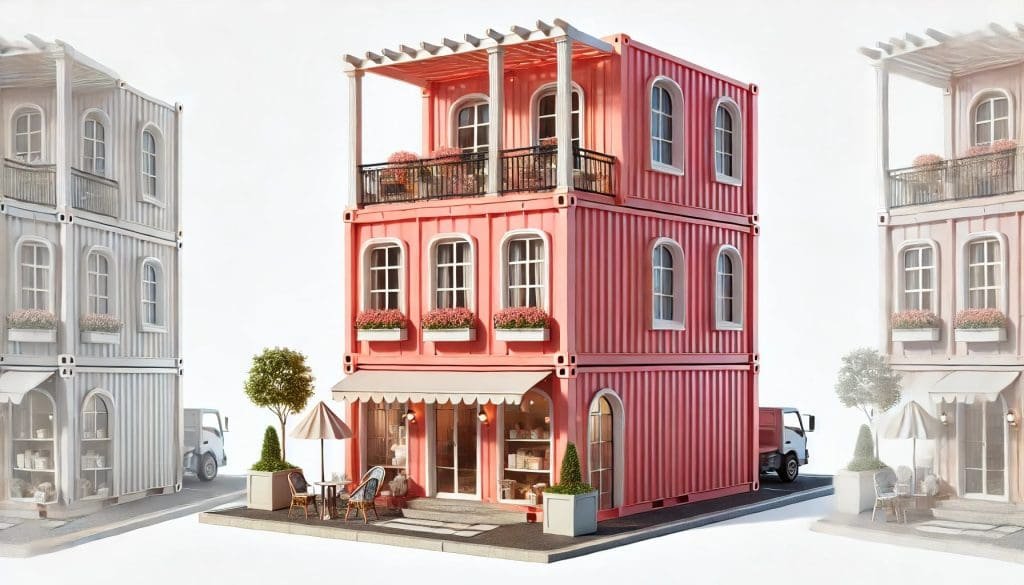
Understanding the Structure of a Crew Member’s Day
Life on a cargo ship follows a structured routine, with crew members adhering to rotating shifts that cover essential operations 24/7. These shifts typically range from four to six hours, allowing each crew member a mix of working, resting, and off-duty time within a 24-hour period. Daily life in cargo ship living quarters revolves around this schedule, which can impact sleep patterns, meal times, and social interactions. Much like remote workers in portable cabins, crew members adapt their personal routines around work schedules and available amenities. For ideas on efficient scheduling in compact environments, explore modular portable cabin designs that support flexible usage.
Meals and Socialization in Communal Spaces
Mealtimes serve as important moments of socialization and relaxation for crew members. Meals are typically served in the galley at set times, with a dedicated cook or kitchen crew preparing dishes to meet various dietary needs. These communal meals help build camaraderie and provide crew members with a chance to unwind and connect. Many container offices in remote areas also include dining or social spaces to support team bonding. For examples of integrated social spaces, check out multi-use container office designs that combine work and communal areas.
Recreation and Leisure Activities to Combat Isolation
Long voyages can be mentally and emotionally challenging, especially due to the isolation from family and friends. To combat this, cargo ship crew quarters include recreational areas where crew members can relax, play games, watch movies, or read books. Some ships even offer fitness rooms with basic workout equipment to help crew members stay physically active. These spaces are essential for mental health and morale, providing crew with a balance between work and personal time. Similar to portable cabins on remote sites, these leisure areas offer a mental escape for users. For ideas on recreational setups, see leisure-oriented portable cabin layouts that provide space for downtime.
Communication with Family and Staying Connected
While at sea, staying connected with loved ones can be challenging due to limited internet connectivity. However, many modern cargo ships offer satellite-based internet in communal areas, allowing crew members to make calls, send messages, and keep in touch with family during off-hours. This connectivity, though limited, plays a vital role in supporting the crew’s mental well-being, helping them manage the isolation of life at sea. Just as container offices provide connectivity for remote workers, these ships aim to keep crew members connected with the outside world. For ideas on connectivity solutions, explore Wi-Fi-enabled container office models that support remote communication.
Adjusting to Time Zones and Physical Demands
As cargo ships travel across various time zones, crew members often face the challenge of adjusting to changing schedules and sleep patterns. These time zone shifts, combined with the physical demands of ship duties, require resilience and adaptability. Crew members may use short naps or other techniques to manage fatigue and stay alert during working hours. The design of cargo ship crew quarters supports rest and recovery by providing essential amenities to help them recharge. Many portable cabins also emphasize rest areas for remote and demanding work environments. For ideas on rest-friendly designs, see rest-optimized portable cabins that support worker recuperation.
Daily routines on a cargo ship combine work, socialization, and relaxation, structured around shifts that ensure the vessel operates smoothly 24/7. In the next section, we’ll discuss safety and health measures in crew living quarters, exploring the protocols and amenities that prioritize the well-being of crew members on board.
Safety and Health Measures in Crew Living Quarters
Emergency Preparedness and Safety Drills
Safety is a top priority on cargo ships, and regular emergency drills are part of daily life to prepare the crew for various situations, such as fires, floods, or abandon-ship scenarios. These drills are mandatory and help ensure that each crew member knows their role and the proper safety protocols in emergencies. Crew members are also trained in the use of life-saving equipment like life jackets, fire extinguishers, and lifeboats, which are located throughout cargo ship living quarters. Similar to container offices used in remote or hazardous environments, these ships incorporate safety measures tailored to unique operational challenges. For examples of safety-compliant setups, explore emergency-ready container office models built for secure operations.
Fire Safety and Hazard Prevention in Crew Quarters
Fire safety is critical in confined spaces such as cargo ship crew quarters. Cabins and shared spaces are designed with fire-resistant materials and equipped with smoke detectors, fire extinguishers, and emergency lighting. In addition, strict policies prohibit open flames, and any electrical wiring or heating elements are carefully monitored to prevent hazards. These safety protocols are essential for protecting the lives of the crew. Many portable cabins also prioritize fire safety, especially in remote areas, with fire-resistant materials and strict safety standards. For fire-safe designs, explore fire-compliant portable cabin options that ensure occupant security.
Health Facilities and Onboard Medical Support
To ensure health and well-being, cargo ships are equipped with basic medical facilities and supplies to handle minor injuries or illnesses. Larger ships may have a designated medical officer, while others rely on trained crew members who can administer first aid. The medical room is stocked with essential medicines, first aid kits, and medical equipment, enabling immediate response to common health issues. These facilities are similar to the first aid stations in portable cabins used for industrial and remote sites. For ideas on health-supportive spaces, see well-equipped portable cabins designed to meet emergency health needs.
Sanitation and Hygiene Protocols
Maintaining cleanliness is crucial on cargo ships to prevent the spread of illnesses in close quarters. Container ship crew quarters have designated sanitation facilities with strict cleaning schedules and protocols, especially in shared bathrooms and dining areas. Crew members are encouraged to follow hygiene practices, with ample handwashing stations, disinfectant supplies, and regular cleaning of high-traffic areas. Similar to the sanitation measures in container offices located on worksites, these protocols help maintain a safe and hygienic environment. For examples of sanitation-focused designs, explore cleanliness-focused container offices that support high hygiene standards.
Air Quality and Ventilation Systems for Health
Good air quality is essential in confined quarters, and modern cargo ship crew quarters are equipped with ventilation systems that maintain fresh air circulation. These systems prevent humidity buildup, reduce odors, and control temperature, contributing to a healthier living environment. Regular maintenance of these systems ensures that they operate efficiently, providing clean air for the crew. Many portable cabins also feature advanced ventilation to promote air quality, especially in confined and high-occupancy areas. For ideas on ventilation solutions, see air-quality-focused portable cabin models that prioritize occupant health.
Mental Health Support and Well-Being Initiatives
Mental well-being is a growing focus on cargo ships, as isolation and long hours can take a toll on crew members’ mental health. Many shipping companies now offer resources such as counseling services, mental health training, and access to recreational activities to support emotional health. Regular communication with family, socialization with crew members, and access to relaxation spaces all play a role in maintaining a positive mental state. Just as container offices used in remote locations incorporate well-being features, cargo ships prioritize crew mental health. For ideas on well-being-enhanced spaces, explore worker-focused container office designs built to support mental and physical health.
Safety and health measures in cargo ship crew quarters, from emergency drills to sanitation protocols, ensure a safe and supportive environment for crew members during long periods at sea. In the next section, we’ll look at modern innovations in container ship living quarters, highlighting advancements that improve comfort, efficiency, and sustainability.
Modern Innovations in Container Ship Living Quarters
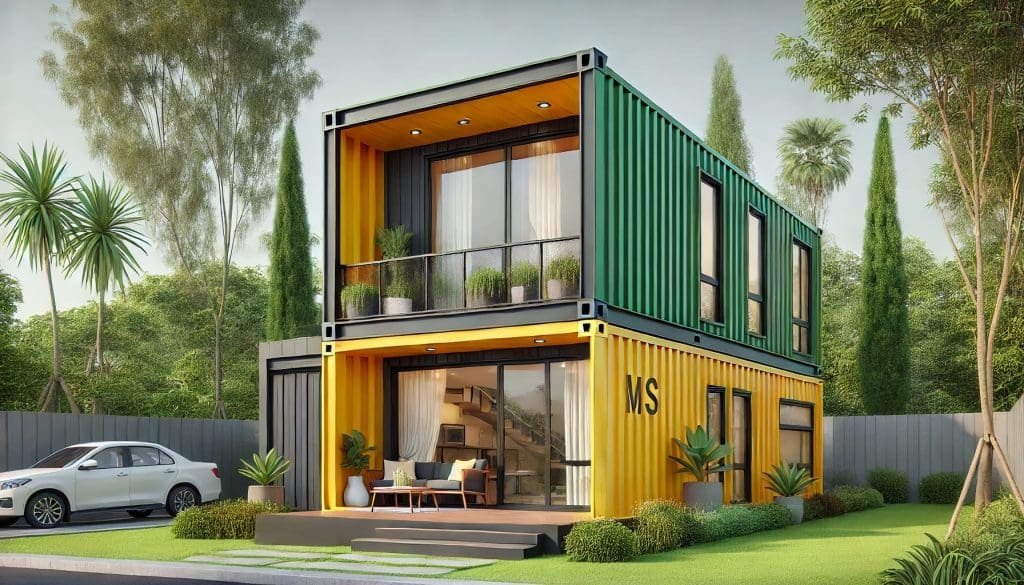
Advancements in Connectivity and Communication
Staying connected with family and friends is essential for crew members, and modern container ships now offer improved connectivity options. Satellite-based internet systems allow crew members to make video calls, check emails, and stay updated with news, making long voyages more bearable. Access to Wi-Fi in cargo ship living quarters has become a standard feature, helping reduce isolation and support mental well-being. Similar to connectivity-enabled container offices, these advancements enable crew members to stay in touch even when in remote locations. For examples of internet-ready setups, explore Wi-Fi-equipped container office designs that facilitate remote communication.
Energy-Efficient Lighting and Power Systems
Energy efficiency is a priority on modern container ships, and crew quarters are now equipped with energy-saving LED lighting, motion sensors, and automated systems that reduce power consumption. Solar panels on some ships help power common areas, contributing to eco-friendly operations and reducing dependence on traditional fuel sources. This approach to sustainability mirrors practices in portable cabins designed for minimal energy consumption. For ideas on energy-efficient setups, check out eco-friendly portable cabin models that prioritize low power use.
Enhanced Climate Control and Air Purification
Climate control technology on container ships has advanced significantly, with air conditioning and heating systems that maintain comfortable temperatures in varying climates. Additionally, modern air purification systems are now integrated into container ship crew quarters, helping to filter out airborne pollutants and allergens. These innovations are especially useful for maintaining air quality on long voyages. Many container offices and cabins in remote areas incorporate similar technologies to ensure occupant comfort. For examples of climate-regulated spaces, explore temperature-controlled container office designs tailored for diverse environments.
Soundproofing and Vibration Reduction for Better Rest
The constant hum of engines and the motion of the ocean can disrupt sleep, so modern container ships are equipped with enhanced soundproofing and vibration-dampening materials. Walls, floors, and bunk frames in container ship crew quarters are designed to minimize noise, creating a quieter, more restful environment for crew members. This feature is crucial for long-term crew well-being, as quality sleep is vital in a high-stress environment. Many portable cabins used in industrial areas also incorporate soundproofing to create a peaceful interior. For examples, explore quiet-focused portable cabin models designed for noise reduction.
Sustainable Water and Waste Management Systems
To support environmental responsibility, container ships are increasingly outfitted with sustainable water systems that filter and recycle greywater for non-potable uses, such as cleaning. Advanced waste management systems also ensure proper disposal and treatment, minimizing the ship’s environmental impact. These sustainable practices align with those used in portable cabins designed for remote or eco-sensitive locations, which often include water-saving and waste-reduction systems. For ideas on eco-conscious designs, check out sustainability-driven portable cabin setups that focus on resource conservation.
Smart Technology Integration for Daily Efficiency
Smart technology has become an integral part of modern cargo ship crew quarters, with automation systems for lighting, climate control, and even security. Crew members can use touch panels or apps to adjust room settings, making life on board more convenient and efficient. Motion sensors, automated lights, and programmable thermostats reduce energy consumption and streamline daily routines. Many container offices and high-tech portable cabins offer similar smart integrations, enhancing both convenience and sustainability. For examples, explore smart-enabled container office solutions that improve functionality.
Modern innovations in container ship crew quarters, from connectivity and soundproofing to sustainable systems, enhance life at sea by providing greater comfort, efficiency, and environmental responsibility. In the next section, we’ll explore the psychological aspects of life in cargo ship crew quarters, addressing the mental health challenges and coping mechanisms of crew members on long voyages.
Challenges and Psychological Aspects of Life in Cargo Ship Crew Quarters
Managing Isolation and Mental Health at Sea
Life aboard a cargo ship can be isolating, as crew members spend long periods away from their families and friends. The lack of regular social interaction, combined with limited access to the outside world, can lead to feelings of loneliness and disconnection. Addressing mental health is essential in cargo ship living quarters, where social isolation can take a toll. Many ships now offer satellite-based internet to help crew members stay in touch with loved ones, which is similar to the connectivity provided in remote container offices that support mental well-being. For examples of connected spaces, explore Wi-Fi-enabled container office designs that enhance communication.
Combatting Stress with Recreational Facilities and Routines
To reduce stress, cargo ships provide recreational facilities where crew members can unwind during their off-hours. Common facilities include gyms, movie rooms, and even gaming consoles, giving crew members ways to relax and relieve tension. Establishing routines that include leisure time is also helpful, as routines bring structure to daily life on board. Recreational options in container ship crew quarters resemble those in portable cabins and container offices designed with leisure areas to support work-life balance. For ideas on recreation-enhanced spaces, see leisure-friendly portable cabin models that encourage relaxation.
Dealing with Time Zone Adjustments and Sleep Disruptions
As cargo ships cross various time zones, crew members often experience disrupted sleep patterns, leading to fatigue and disorientation. The rotating shift schedule, or “watch system,” used on most cargo ships requires adaptability, as crew members may need to work and sleep at unusual hours. Adjusting to these shifts is challenging, but strategies like short naps and maintaining a consistent routine help crew members manage their sleep cycles. These time-adjustment challenges mirror those faced by remote workers in portable cabins in distant or isolated locations. For ideas on sleep-friendly setups, explore rest-oriented portable cabin designs that support occupant well-being.
Coping with Limited Space and Privacy
In the confined quarters of a cargo ship, space and privacy are limited, which can lead to feelings of frustration or claustrophobia over time. While senior officers may have private cabins, general crew members often share their living space. Ships are now incorporating design improvements, such as privacy curtains and noise-reducing materials, to create personal space within shared cabins. This setup is similar to compact container offices, where partitioned areas create a sense of privacy in limited space. For examples of privacy-focused designs, see personal space-maximized container office models designed for comfort.
Access to Mental Health Support and Counseling Services
With an increased awareness of mental health challenges at sea, many shipping companies are investing in support systems, such as remote counseling services and mental health training for crew members. Some ships offer wellness programs, including meditation resources or relaxation spaces, to help crew members manage stress. Access to mental health support plays a vital role in ensuring that crew members feel valued and supported, even when away from home. Many portable cabins and container offices for remote workers incorporate wellness features to support mental well-being. For examples of wellness-enhanced designs, explore well-being-focused portable cabin options that cater to emotional health.
Psychological challenges are a significant aspect of life on cargo ships, but through mental health support, recreational facilities, and improved connectivity, crew members are better equipped to handle the stresses of life at sea. In the final section, we’ll discuss training and requirements for living on cargo and container ships, covering the skills and lifestyle adjustments needed for life aboard these vessels.
Training and Requirements for Living on Cargo and Container Ships
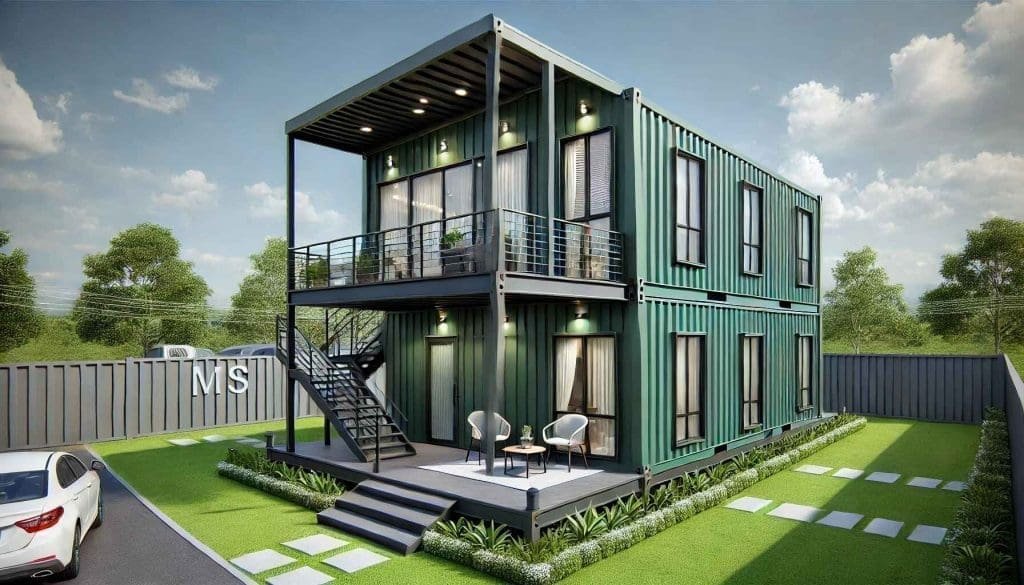
Mandatory Training for Cargo Ship Crew Members
Life on a cargo ship requires specialized training, as crew members must be prepared to handle challenging tasks and emergencies. All crew members undergo Basic Safety Training (BST), which includes fire fighting, first aid, survival techniques, and personal safety responsibilities. This training ensures that each individual is equipped to protect themselves and others on board. Similar to the safety protocols for container offices in industrial settings, cargo ship crew members must be well-prepared for various situations. For examples of secure, safety-focused spaces, explore safety-compliant container office models that support secure operations.
Understanding Daily Life and Work Expectations on Board
Daily life on a cargo ship involves physical and mental resilience, as crew members follow rotating shifts and handle demanding tasks. Crew members must adjust to a structured lifestyle, with limited personal space and the need to balance work with rest and recreation. The ability to adapt to changing schedules and maintain focus is essential for success on board. This adaptability is similar to the requirements for remote workers in portable cabins located in isolated regions. For ideas on work-friendly setups, see efficient portable cabin designs built to support productivity and comfort.
Technical Skills and Certifications for Specialized Roles
Specialized roles on a cargo ship, such as engineers, navigators, and electricians, require additional technical training and certifications. Engineers, for instance, must understand complex machinery and maintenance protocols, while navigators must be skilled in maritime navigation. These certifications ensure that each crew member can safely perform their duties and handle critical responsibilities. This technical expertise aligns with the skill requirements in container offices used in technical and industrial fields. For examples of tech-ready spaces, explore technically-equipped container office setups designed for skilled workers.
Physical and Psychological Fitness Requirements
Crew members on cargo ships must meet physical and psychological fitness standards, as the job demands strength, endurance, and resilience. Physical fitness is essential for handling heavy machinery, maintaining ship systems, and responding in emergencies. Additionally, psychological resilience is crucial, as long periods at sea can be mentally challenging. Regular fitness checks and mental health assessments help ensure crew members are prepared for life on board. Similar standards are maintained in portable cabins used in demanding work environments to ensure the health and safety of occupants. For ideas on fitness-supportive setups, see health-conscious portable cabin designs that promote well-being.
Lifestyle Adjustments and Preparation for Long Voyages
Adjusting to life at sea requires significant lifestyle changes, from adapting to confined quarters and limited social interaction to managing personal routines around strict schedules. Crew members are often briefed on what to expect before joining a ship, helping them mentally prepare for the experience. Familiarity with ship operations, routines, and coping mechanisms helps new crew members adjust more quickly. This preparation is akin to the adjustments needed by remote workers living in container offices in secluded locations. For examples of lifestyle-adapted designs, explore adaptable container office models built for remote living.
Training and preparation are essential for life on a cargo ship, equipping crew members with the skills and resilience needed to thrive in a demanding environment. This concludes our comprehensive guide to cargo ship living quarters, from design and amenities to the psychological challenges and training involved in life at sea.
 Container Cafe
Container Cafe
















































































